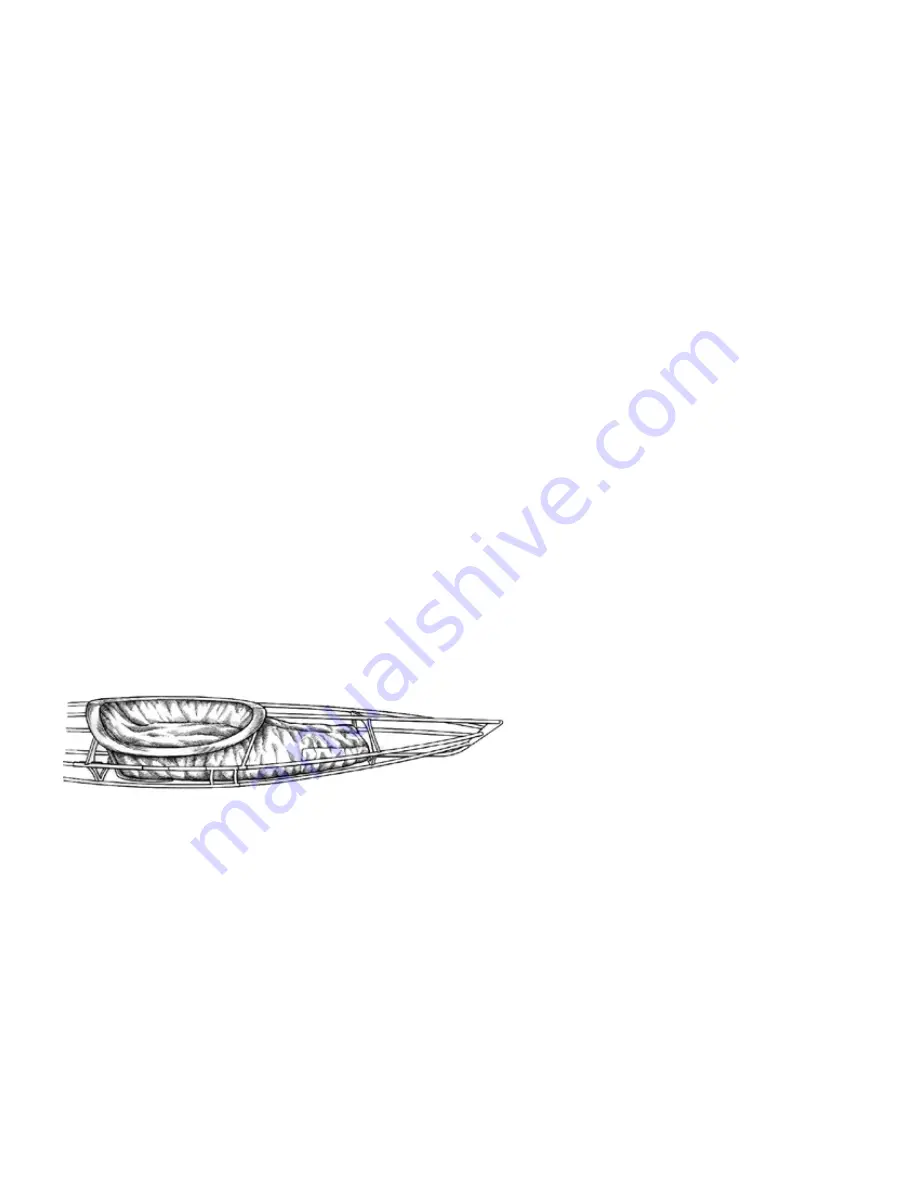
Made from high-quality coated nylon, the sea sock is a
great safety item. The top of the sock fits tightly around
the cockpit coaming rim. Contoured to fit along the
seatback and bottom, the “foot” is loose through the
cockpit, creating a “pod”. The paddler then sits in the
sock. Legs and feet are not constricted. The spray skirt fits
as usual. In the event of a capsize, water will only enter
the sock, and not the whole boat.
We can not stress enough the importance of the Sea Sock.
It is your key safety item in a capsize to prevent flooding
your kayak; it also prevents sand and dirt getting in the
kayak.
Tips on Usage and Installation
•
The coloured Feathercraft label
indicates inside or “right”
side of sock.
•
Center the seam on the rim of
the sea sock with the center point
on the bow of the coaming.
•
Once the Sea Sock is in place, sit
in the sock, and “burp” it by lifting
the edges. This releases trapped
air that causes the sock to billow
up. Then, pull the sock up under
the bracing straps on each side of
the cockpit. This creates a “pocket”
for your legs to brace against.
The Feathercraft Sea Sock


































